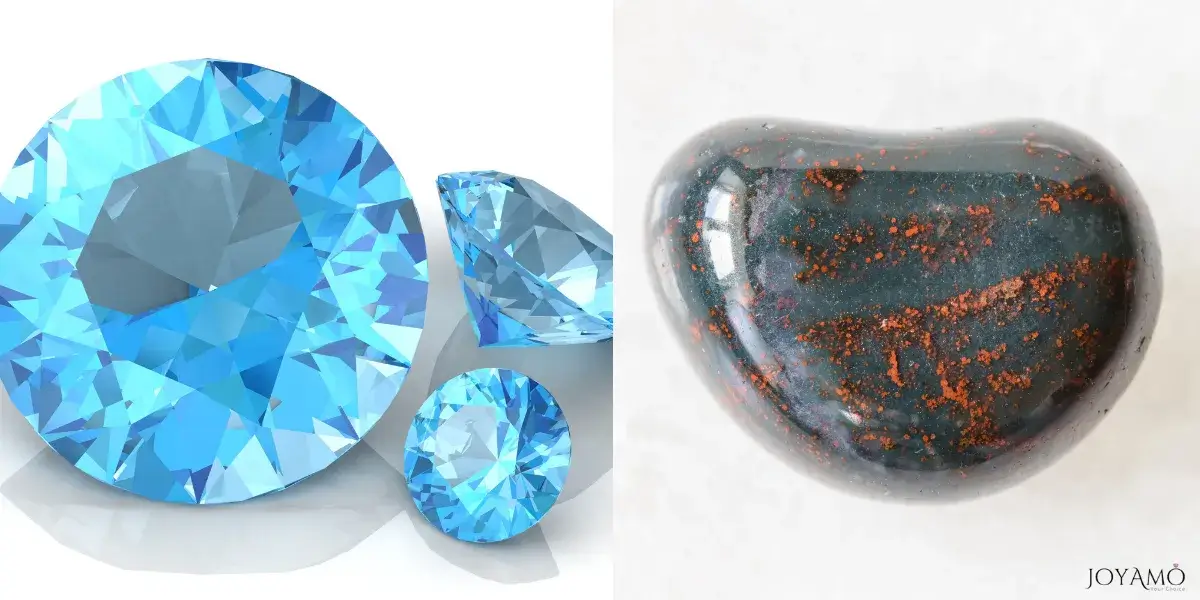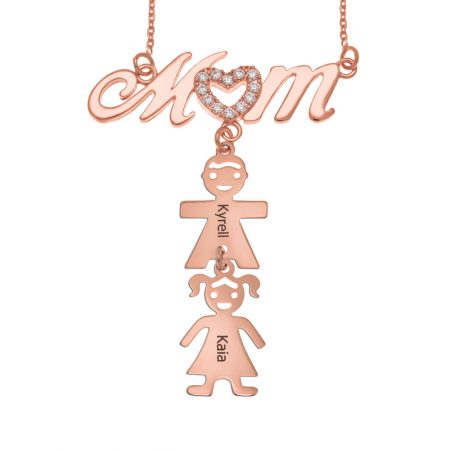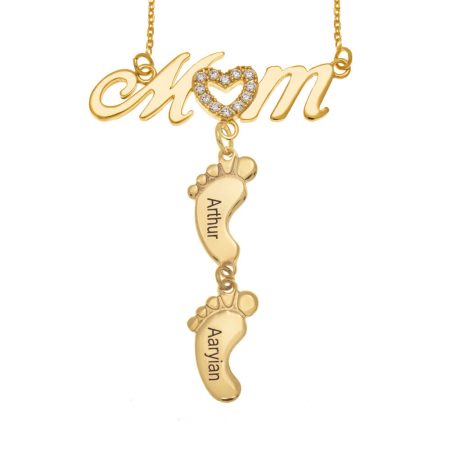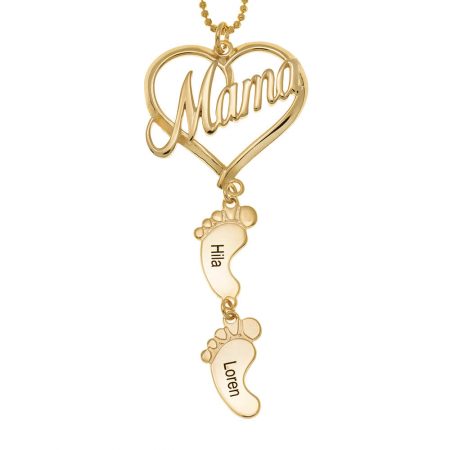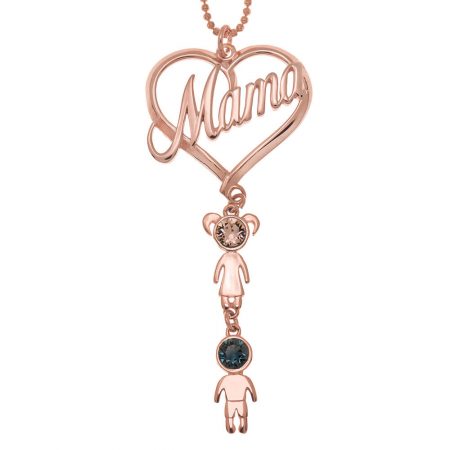Birthstones have significance in different cultures symbolizing a connection between people and the celestial realm.
Each month is linked to gemstones believed to bring luck, protection, or other benefits to those born during that time.
March stands out as it is associated with not one but two birthstones: Aquamarine and Bloodstone.
✒ AQUAMARINE
Aquamarine, known for its soothing color of the sea, is valued for its calming properties and connections to courage and clarity.
It represents peace and safeguarding making it a suitable option for individuals born in March, a month often tied to the shift from winter to spring signifying renewal of life and vitality.
✒ BLOODSTONE (HELIOTROPE)
In contrast, Bloodstone, also called heliotrope, offers an appearance with its green hue speckled with red dots.
Its name comes from the belief in its healing abilities and ability to stop bleeding.
Bloodstone symbolizes vigor, resilience, and bravery, fittingly reflecting the energy and strength often associated with spring’s arrival.
The idea of having birthstones for each month enriches the tradition of birthstones by allowing individuals born in a month to select a gemstone that resonates most with them or mirrors their character and beliefs.
Individuals born in March have the privilege of choosing between two birthstones, each, with its symbolism and importance offering a range of options.
The presence of Aquamarine and Bloodstone as March’s birthstones highlights the depth and variety found in the tradition of birthstones.
These gemstones, each, with their characteristics and meanings allow those born in March to celebrate their birth month in a way that resonates with the qualities and attributes embodied by these stones.
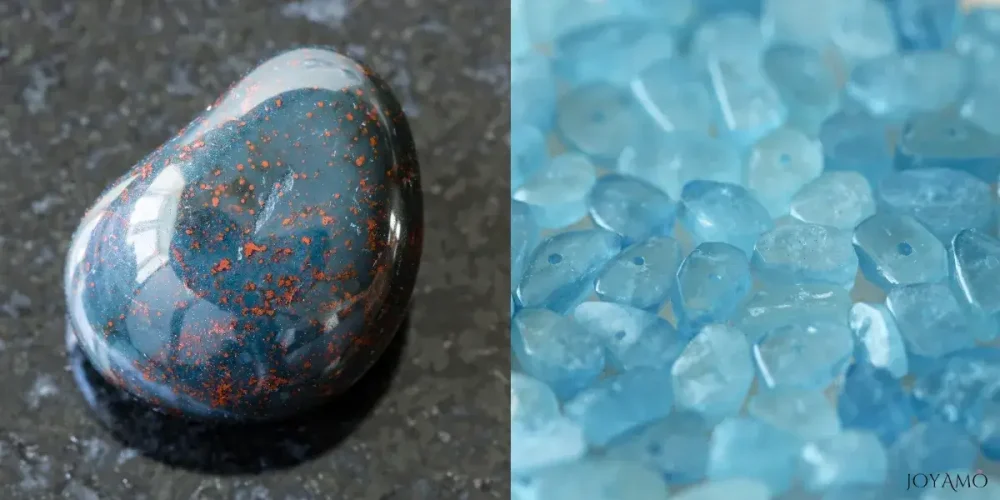
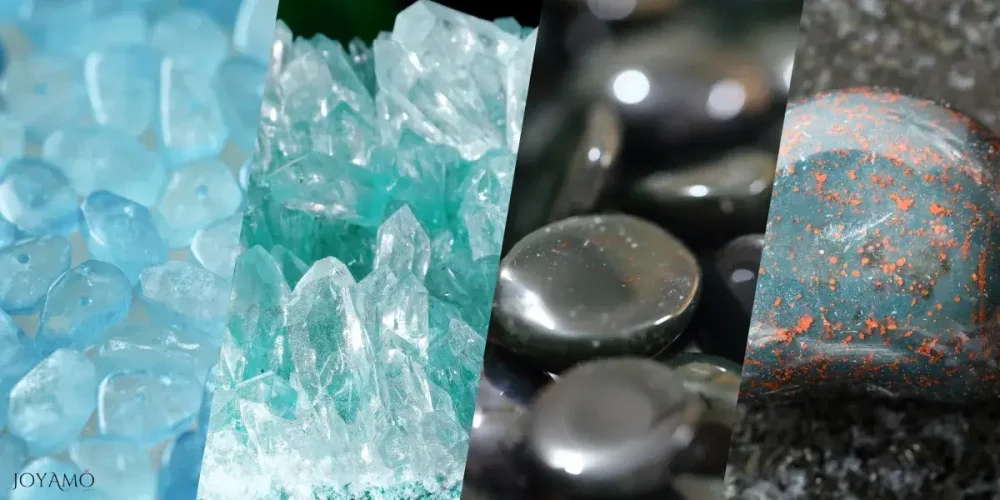
AQUAMARINE
1)History and origins of aquamarine
The captivating gemstone known as aquamarine has a history that dates back thousands of years.
Its name originates from the words “aqua,” meaning water, and “marina,” meaning sea reflecting its mesmerizing blue-green hues of peaceful ocean waters.
Throughout history, various civilizations have been enamored with aquamarine for its appearance.
Ancient Egyptians viewed it as a symbol of happiness and eternal youth while the Greeks linked it to Poseidon, the god of the sea, believing it safeguarded sailors and ensured voyages through waters.
Aquamarine was believed to possess healing properties, for eye, throat, and respiratory ailments.
Its soothing aura and association with clarity attracted royalty and scholars who adorned themselves with aquamarine jewelry to improve focus and cognition.
Nowadays, aquamarine remains highly valued for its beauty and symbolic meanings.
Its enduring legacy across cultures and eras contributes to its appeal as a gemstone prized not only for aesthetics but also for its spiritual connotations.

2)Aquamarine geological formation and major mining locations
Aquamarine, a type of beryl, is created through processes that span millions of years.
It typically forms within veins which are found in granite rocks and are known for their texture.
The formation journey starts with the infusion of fluids in beryllium into these veins along with elements like aluminum, silicon, and oxygen.
As these fluids cool down and solidify, they create pockets where beautiful aquamarine crystals can take shape.
Various locations around the world serve as mining sites for aquamarine, with deposits present in countries like Brazil, Madagascar, Nigeria, Pakistan, Afghanistan, and Russia.
Brazil stands out as a producer of aquamarine globally in regions like Minas Gerais and Espírito Santo.
The Brazilian mines yield a range of aquamarine specimens ranging from crystals to large gemstones known for their exceptional clarity and color.
Madagascar is also renowned for its high-quality aquamarine crystals that boast transparency and shine.
Countries such as Nigeria, Pakistan, Afghanistan, and Russia also possess aquamarine reserves contributing to the availability of this captivating gemstone.
The unique geological characteristics of these mining areas result in aquamarine crystals showcasing a variety of colors and features that enhance the gemstone’s appeal in the jewelry industry.

3)Physical properties of the Aquamarine
Aquamarine, known for its green shades reminiscent of the ocean, possesses unique physical characteristics that add to its charm and popularity in the world of gemstones.
✒ Color
The color of aquamarine can vary greatly ranging from blue to blue green. This diversity is a result of trace elements like iron that impact the intensity of the gemstone’s hue. The coveted aquamarines display a pure blue color with subtle green hints evoking the pristine waters of a tropical sea. Yet aquamarines with a hint of green are also highly sought-after and often command premium prices in the market.
✒ Clarity
Aquamarine typically boasts transparency and clarity featuring minimal to no imperfections. High-quality aquamarines are treasured for their crystal appearance which enhances their sparkle and sheen. While some natural inclusions like mineral deposits or growth patterns may be present within aquamarine crystals, they only serve to add character and individuality to each stone.
✒ Cut
Aquamarine is frequently faceted to maximize its brilliance and highlight its color. Popular cuts for aquamarine include oval, round, pear, emerald, and cushion shapes; however custom cuts and unique shapes are also prevalent in the market.
The choice of how to cut an aquamarine depends on factors such as the size, shape, and clarity of the crystal along with the desired design for the final piece of jewelry.
✒ Carat Weight
Aquamarine crystals come in sizes ranging from pieces to large stunning gemstones. The value of aquamarine increases with size as larger stones fetch prices, especially if they display color and clarity. Despite this, aquamarine remains affordable compared to gems allowing for the creation of jewelry without a hefty price tag.
✒ Durability
Aquamarine ranks between 7.5 and 8 on the scale of mineral hardness making it durable enough for wear in jewelry. While tough aquamarine is not impervious to scratches and abrasions; hence it’s important to shield it from chemicals, extreme temperatures, and physical impacts. Regular cleaning using soap and warm water is advised to preserve the gemstone’s shine and brilliance.
In essence, aquamarine’s physical attributes from its captivating color variations to its clarity and durability, all contribute to its timeless beauty and enduring popularity as a gemstone in the world of jewelry and embellishment.
📌 Physical properties of aquamarine
| Property | Description |
|---|---|
| Color | It ranges from pale blue to deep blue-green are influenced by trace elements like iron. |
| Clarity | Typically exhibits excellent transparency with few to no visible inclusions. |
| Cut | Commonly faceted in shapes such as oval, round, pear, emerald, and cushion. |
| Carat Weight | Aquamarine crystals come in various sizes, with larger stones commanding higher prices. |
| Hardness | Ranks 7.5 to 8 on the Mohs scale of mineral hardness, making it durable for everyday wear. |
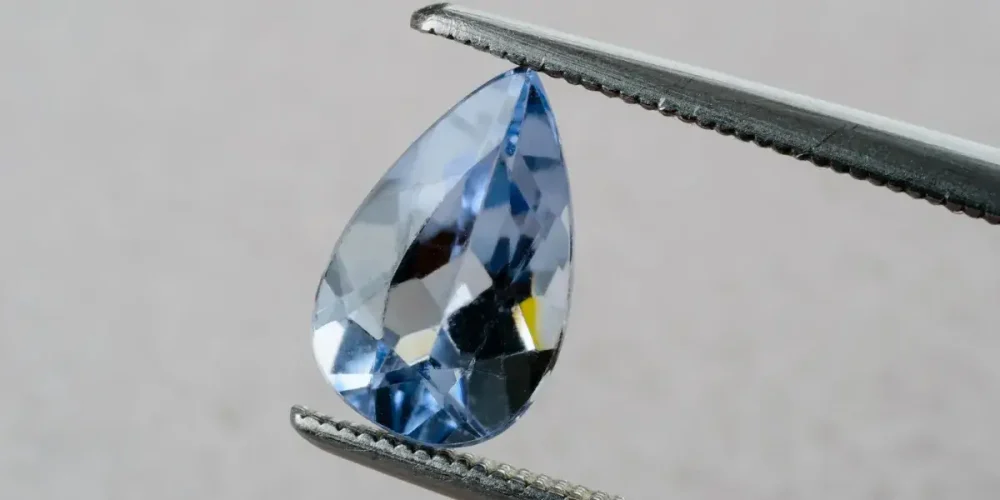
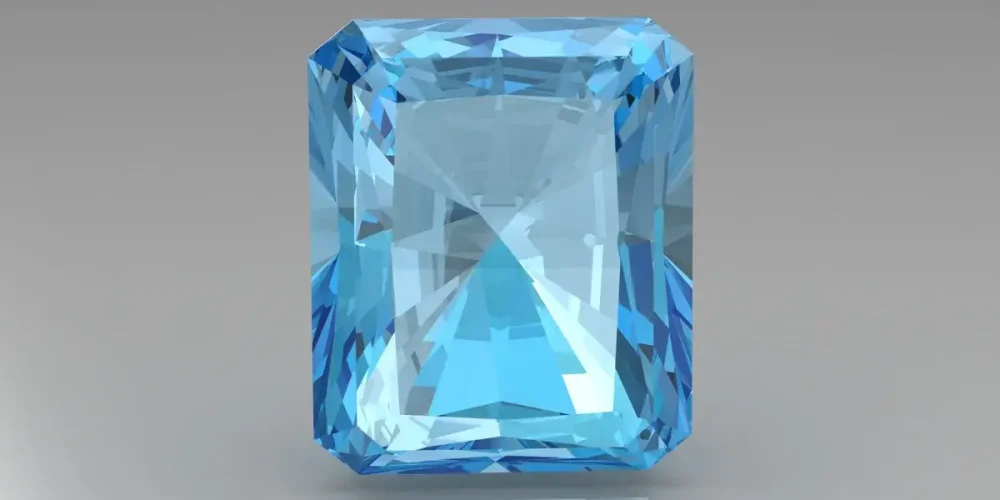
4)Symbolism and Meanings Associated with Aquamarine
Aquamarine carries symbolism and significance that transcends cultures and eras.
Its calming green hue reflects the essence of the sea representing tranquility, clarity, and emotional equilibrium.
In tales, aquamarine was revered as an amulet for sailors ensuring their safety during maritime journeys through rough waters.
Furthermore, it symbolizes bravery and resilience making it an apt gemstone for individuals confronting trials or embarking on adventures.
In society, aquamarine signifies optimism, inner harmony, and the rejuvenation of life endearing it as a cherished gemstone in both adornments and spiritual customs.
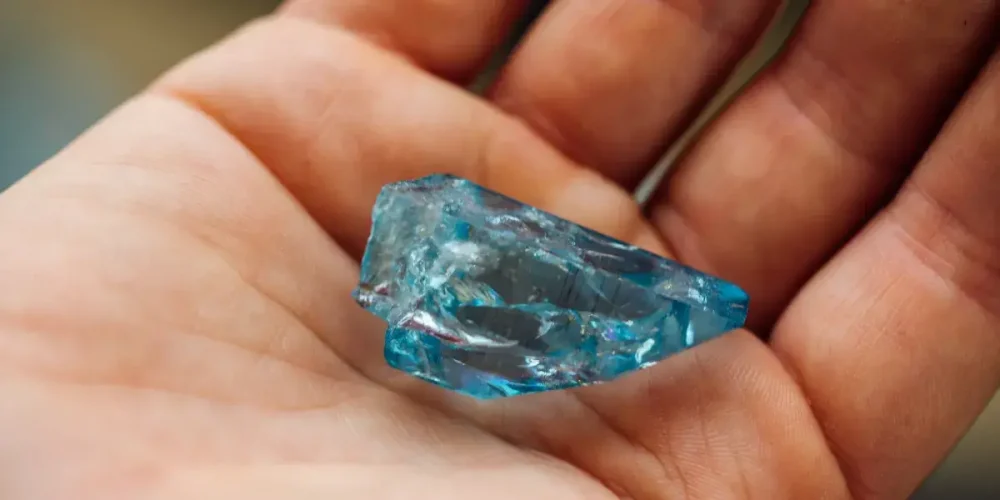
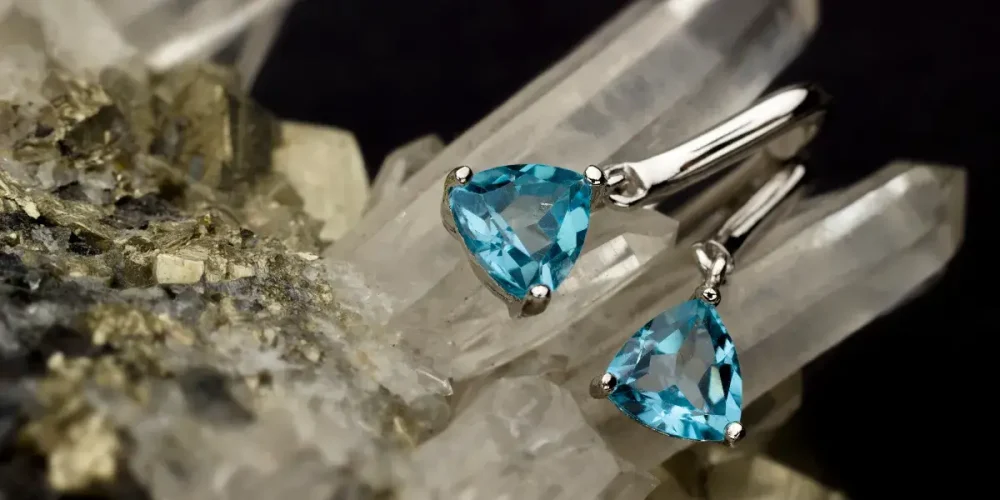
5)Metaphysical and Healing Properties of Aquamarine
Aquamarine is esteemed for its therapeutic attributes believed to foster emotional stability, mental clarity, and inner serenity.
It is believed to pacify the mind and emotions while alleviating stress, anxiety, and apprehension.
Additionally, aquamarine is linked to enhancing communication skills and self-expression— for nurturing relationships and cultivating unity.
In healing practices, aquamarine is utilized to relieve issues in the throat area while bolstering immune functions, for overall wellness.
Aquamarine’s soothing vibes and its association, with water make it a valuable asset for meditation, spiritual development, and delving into one’s depths.
6)Notable Aquamarine Gemstones and Jewelry Pieces
Throughout history, there have been known aquamarine gemstones and jewelry pieces that have captured the world’s fascination.
One remarkable example is the “Dom Pedro” aquamarine, a crystal weighing, over 10,000 carats currently housed at the Smithsonian Institutions National Museum of Natural History.
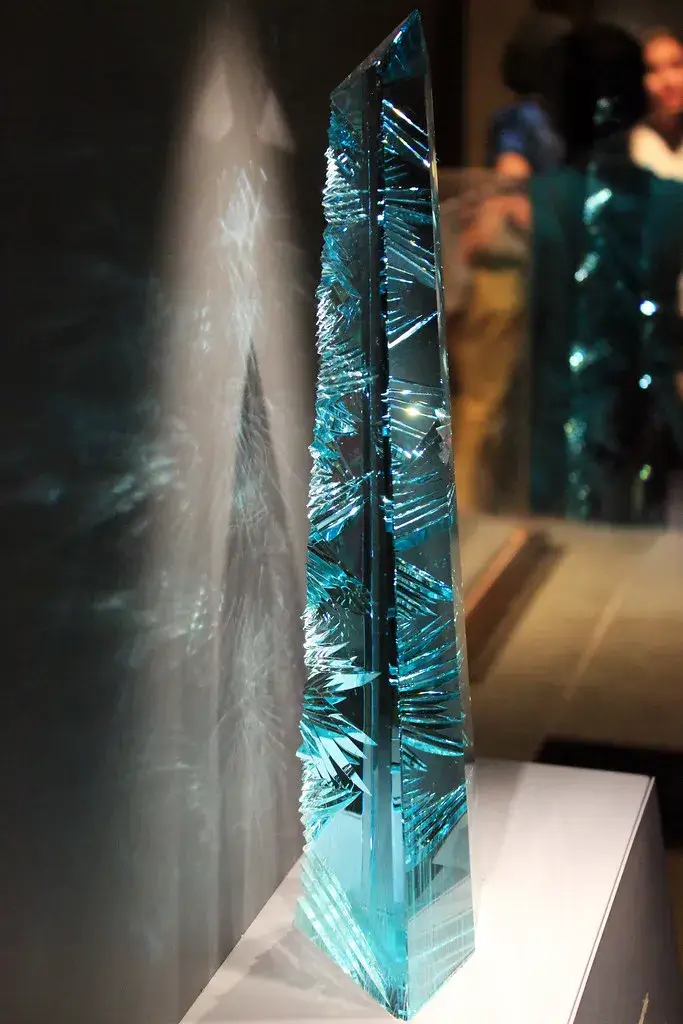
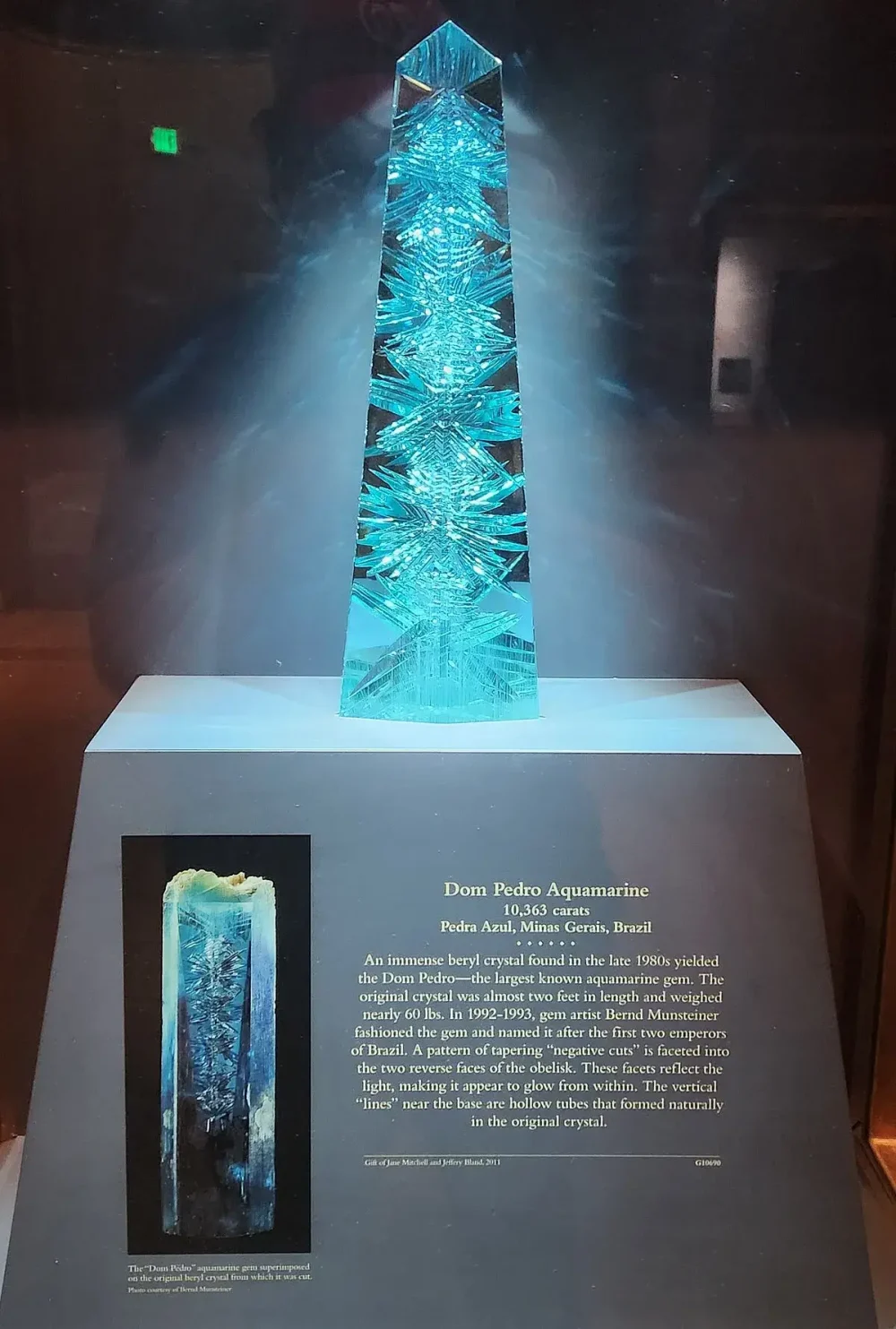
Another famous creation is the Aquamarine Tiara worn by Queen Elizabeth II adorned with stones encircled by diamonds and donned on royal occasions.


Also, celebrities such as Elizabeth Taylor and Angelina Jolie have been seen sporting aquamarine jewelry on the carpet further solidifying the gemstone’s reputation as a symbol of grace and refinement.
7)Tips for Caring for Aquamarine Jewelry
To preserve the allure and sparkle of aquamarine jewelry proper care and maintenance are crucial.
It is advisable to avoid exposing aquamarine pieces to chemicals, extreme temperatures, or prolonged sunlight as these elements can lead to damage or discoloration.
Regularly clean your aquamarine jewelry with soap and warm water by scrubbing it with a soft brush or cloth to remove accumulated dirt and oil.
Avoid using steam cleaners as they may harm the gemstone.
Store your aquamarine jewelry separately from stones to prevent scratches and consider cleaning and inspection from time to time to ensure its longevity.
Aquamarine jewelry can keep its beauty and charm for years with proper care.
BLOODSTONE
1)History and origins of bloodstone
Bloodstone, also known as heliotrope, holds a history filled with stories of myth, legend, and cultural importance.
Its name “Bloodstone” comes from its look, featuring green hues with red specks that resemble drops of blood.
The roots of Bloodstone go back to civilizations where it was highly regarded for its qualities.
In Egypt, bloodstone was thought to possess abilities such as stopping bleeding and aiding in healing.
It was often crafted into amulets and seals for protection, worn as talismans, and used in rituals.
The Greeks and Romans also valued bloodstone greatly connecting it to traits like courage, strength, and success in battles.
Soldiers would carry bloodstone amulets believing they offered protection and boosted their combat skills.
In Europe, bloodstone was tied to themes of martyrdom and religious symbols; some even saw the specks as symbolic of Christ’s blood.
It found its way into art through carvings, crosses, and religious artifacts.
Throughout the ages, bloodstone has been entwined with myths and cultural beliefs.
An ancient Babylonian legend tells of a dragon slain by the sun god whose spilled blood formed what we now know as bloodstone.
In lore, there’s a tale that bloodstone originated from the mingling of the earth with the blood of the god of war Indra.
Bloodstone is highly valued today for its look and symbolic meaning.
It is commonly incorporated into jewelry, carvings, and decorative items featuring a hue and red specks that add an element of allure and enigma.
Whether appreciated for its appeal or revered for its spiritual connotations, bloodstone remains a captivating gem with a narrative as intriguing as its beauty.

2) Bloodstone geological formation and major mining locations
Bloodstone, also called heliotrope, owes its origin to a process that has unfolded over millions of years.
This unique gem is a type of chalcedony, a form of microcrystalline quartz known for its hue adorned with red spots or streaks resembling droplets of blood.
The creation of bloodstone commences within the Earth’s crust where silica-rich fluids seep through rocks like limestone or basalt.
With time these fluids lay down layers of silica gel that gradually solidify into chalcedony.
During the crystallization process, mineral impurities like iron oxide and hematite get trapped in the chalcedony giving rise to the specks in bloodstone.
Bloodstones can be found in mining locations including India, Brazil, Australia, China, and the United States. In India bloodstone is predominantly mined in Gujarat and Rajasthan from weathered rocks and alluvial deposits.
Brazilian bloodstone is renowned for its color and vivid red patterns and is commonly discovered in Minas Gerais and Bahia alongside agate and jasper deposits.
Bloodstone is found not only in sources but also in smaller quantities in Australia specifically in Western Australia, where it is discovered alongside other precious stones like opal and chalcedony.
China and the United States, particularly the states of Wyoming and California, also have some bloodstone deposits although their production levels are relatively low compared to countries.
The geological formation of bloodstone serves as a testament to the processes that shape the Earth’s crust over periods.
Its distinctive blend of colors and patterns has established it as a gemstone for jewelry making and lapidary art, valued for its appeal as well as its historical symbolism.

3)Physical properties of the Bloodstone
Bloodstone, also known as heliotrope, is a form of chalcedony highly valued for its appearance and fascinating physical attributes.
Let’s learn about its traits, in detail:
✒ Color
Bloodstone is recognized for its hue varying from deep forest green to olive green. What makes Bloodstone stand out are the spots or streaks dispersed throughout the green backdrop resembling droplets of blood. This bold interplay of colors not only gives Bloodstone its name but also enhances its individuality and captivating allure.
✒ Texture
When cut and polished, bloodstone boasts a texture that makes it perfect for crafting jewelry and decorative pieces. In its state, bloodstone might display a coarse or waxy texture owing to the presence of microcrystalline quartz in its composition.
✒ Transparency
Typically opaque, bloodstone does not permit light to pass through it. This lack of transparency stems from mineral impurities and inclusions within the chalcedony matrix which contribute to the coloration and texture of bloodstone.
✒ Hardness
Scoring between 6.5 and 7 on the scale of mineral hardness, bloodstone exhibits hardness levels suitable for jewelry-making and ornamental purposes. While durable enough for use, precautions should be taken to prevent scratches or chips.
Bloodstone has an appearance when polished displaying a sheen that enhances its visual charm. The sleek surface of Bloodstone reflects light showcasing its hue and red spots adding to its overall attractiveness.
The weight of a bloodstone can vary based on its makeup and structure typically falling within the range of 2.58 to 2.65 grams, per centimeter. This density contributes to the feel and sturdy presence of bloodstone when worn or showcased.
Aside from being hard, bloodstone also exhibits toughness making it able to withstand impact and pressure without fracturing or breaking. This durability makes bloodstone ideal for use in jewelry and carvings where resilience is key.
Overall, the physical attributes of bloodstone from its color and texture to its hardness and toughness, contribute to its appeal as an adaptable gemstone.
Admired for its beauty or valued for its meaning bloodstone continues to fascinate and inspire with its exceptional qualities.
📌Physical properties of bloodstone
| Property | Description |
|---|---|
| Color | Deep green with red spots or streaks resembling drops of blood. |
| Texture | Smooth and polished when cut and polished; may exhibit a slightly rough or waxy texture in its natural state. |
| Transparency | Generally opaque, meaning it does not allow light to pass through. |
| Hardness | Ranks between 6.5 and 7 on the Mohs scale of mineral hardness, making it moderately durable for use in jewelry and decorative items. |
| Luster | Exhibits a vitreous to waxy luster when polished, giving it a glossy sheen. |
| Density | Typically falls within a range of 2.58 to 2.65 grams per cubic centimeter. |
| Toughness | Exhibits good toughness, able to withstand impact and pressure without fracturing easily. |
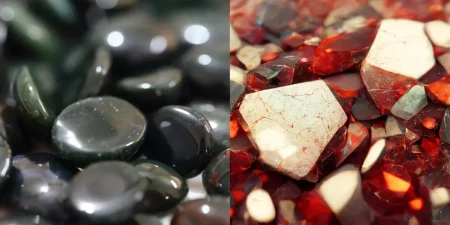
4)Symbolism and Meanings Associated with Bloodstone
Throughout history, bloodstones have held a place in cultures due to their symbolic meanings.
The rich green hue of bloodstone accented by spots that resemble drops of blood has sparked different interpretations.
At times, people associated bloodstone with bravery, power, and triumph in battles making it a favored charm for warriors and soldiers.
It was believed to offer protection from harm and boost one’s abilities on the battlefield.
Also, bloodstone was commonly linked to concepts of healing and vitality representing rejuvenation and the everlasting cycle of life.
Today, bloodstone remains valued for symbolizing strength, resilience, and the victory of the spirit in times.
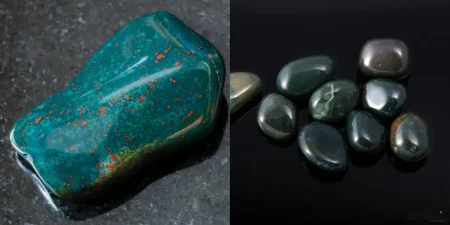
5)Metaphysical and Healing Properties of Bloodstone
Bloodstone is esteemed for its therapeutic attributes that are thought to enhance vitality, vigor, and overall wellness.
It is often connected with grounding energies and harmonizing forces that help alleviate stress, anxiety, and emotional turmoil.
Bloodstone is also said to amplify courage, self-assurance, and inner fortitude – qualities that prove beneficial in conquering life’s hurdles and adversities.
In the world of healing methods, bloodstone is utilized to bolster the body’s circulation, enhance blood flow, and purify the system.
It is also believed to strengthen the system rev up metabolism and facilitate recovery.
Furthermore, bloodstone is thought to have a soothing impact on the psyche aiding in sharpening focus, concentration, and mental acuity.
Used as adornment, kept as a charm, or incorporated into meditation and energy practices, bloodstone is cherished for its capacity to elevate and rejuvenate the body, mind, and soul.
6)Notable Bloodstone Gemstones and Jewelry Pieces
Bloodstone, with its unique appearance and rich history, has inspired the creation of numerous notable gemstones and jewelry pieces.
One such example is the “Bishop’s Stone,” a large bloodstone set in the bishop’s ring traditionally worn by members of the clergy.
These rings often feature intricate carvings or engravings, symbolizing themes of spirituality and protection.
Another notable bloodstone gemstone is the “Martyr’s Stone,” believed to have been formed from drops of blood shed by Christian martyrs.
These bloodstone relics were highly prized during the medieval period and were often set into crosses, reliquaries, and other religious artifacts as symbols of martyrdom and faith.
In addition to these historical pieces, contemporary jewelry designers continue to create stunning bloodstone jewelry, ranging from rings and pendants to bracelets and earrings.
Bloodstone cabochons are often set in sterling silver or gold settings accentuating their natural beauty and vibrant color.
Overall, the rich symbolism and striking appearance of bloodstone make it a favorite among collectors and jewelry enthusiasts alike, with notable gemstones and jewelry pieces celebrated for their historical significance and artistic craftsmanship.
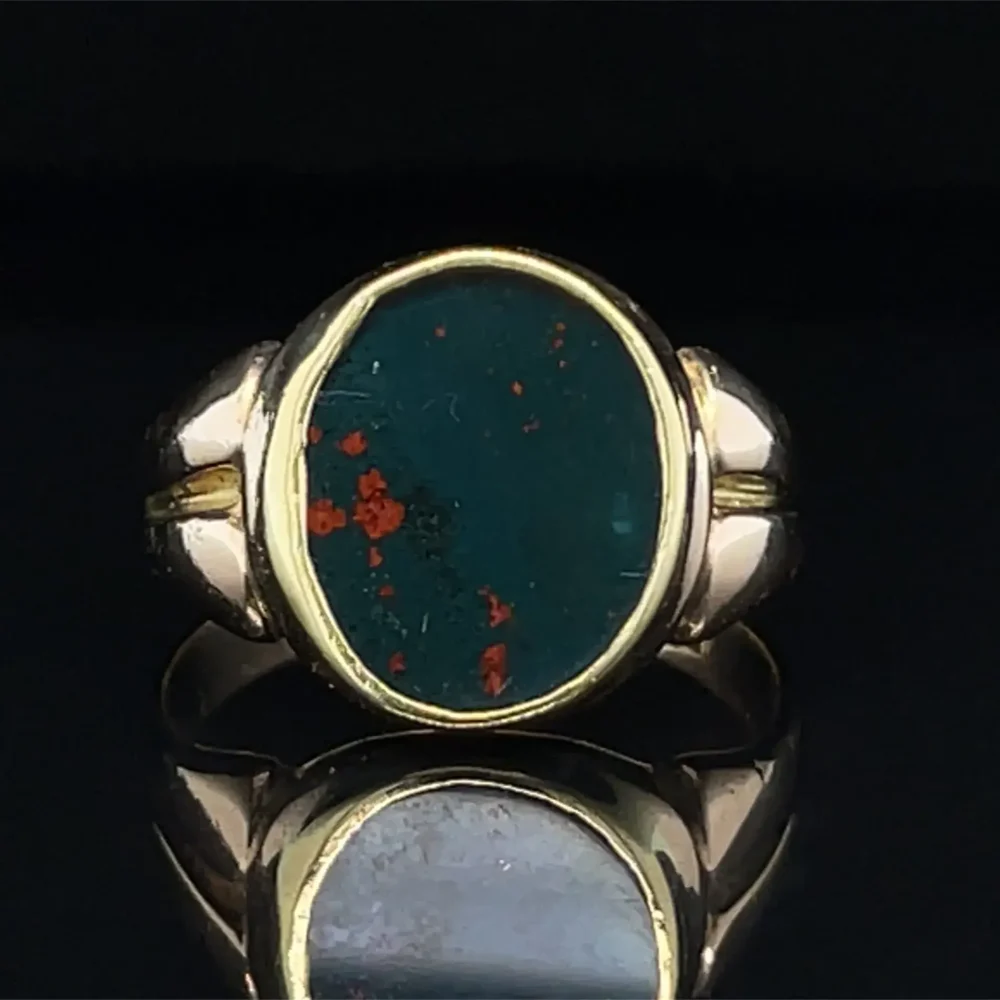

7)Tips for Caring for Bloodstone Jewelry
Here are some suggestions to help maintain the beauty of your bloodstone jewelry pieces:
- Avoid using chemicals, like bleach or ammonia as they can harm the stone’s surface.
- Store your bloodstone jewelry separately to prevent any scratches or damage.
- Clean your bloodstone jewelry regularly with soap and warm water using a brush or cloth to gently remove dirt and debris.
- Keep your bloodstone jewelry away from temperatures or sudden temperature changes to prevent cracking or fracturing of the stone.
- Periodically check your bloodstone jewelry for settings or any signs of damage. Seek professional help for repairs when needed.
- Consider taking off your bloodstone jewelry before participating in activities that may expose it to impacts or abrasions such, as sports or household tasks.
If you follow these easy care tips you will be able to keep your bloodstone jewelry looking radiant and beautiful for years.
March Birthstones and the Zodiac: PISCES
March birthstones, bloodstones, and aquamarine share a captivating bond with the zodiac, intertwining celestial narratives with earthly treasures.
Bloodstone, historically revered for its mystical properties, embodies vitality, courage, and passion, qualities mirrored in the vivid hues of bloodstone.
Believed to enhance strength and courage, bloodstone aligns with Pisces energy, empowering individuals to overcome challenges and embrace new beginnings.
Conversely, aquamarine, with its serene blue tones reminiscent of tranquil waters, finds kinship with Pisces (February 19 – March 20), the ethereal dreamer of the zodiac.
Pisces, symbolized by two fish swimming in opposite directions, navigates the depths of imagination and emotion.
Aquamarine’s association with clarity, intuition, and tranquility harmonizes with Pisces’ intuitive nature, offering solace amidst life’s currents.
Together, bloodstone and aquamarine encapsulate the duality of March-born souls, embodying the fervor of Psices’ spirit and the introspective depth of their empathic souls.
Adorning customized birthstone necklaces, as a talisman of courage, or a beacon of serenity, these birthstones serve as celestial companions, guiding individuals along their cosmic journey of self-discovery and transformation.
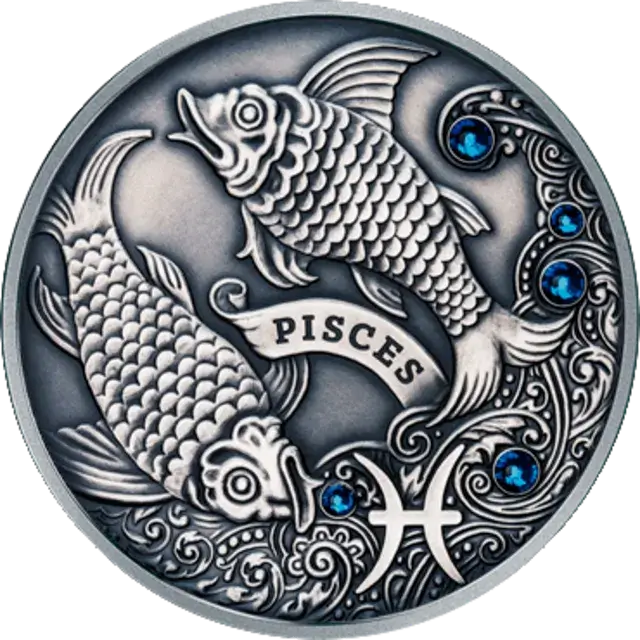
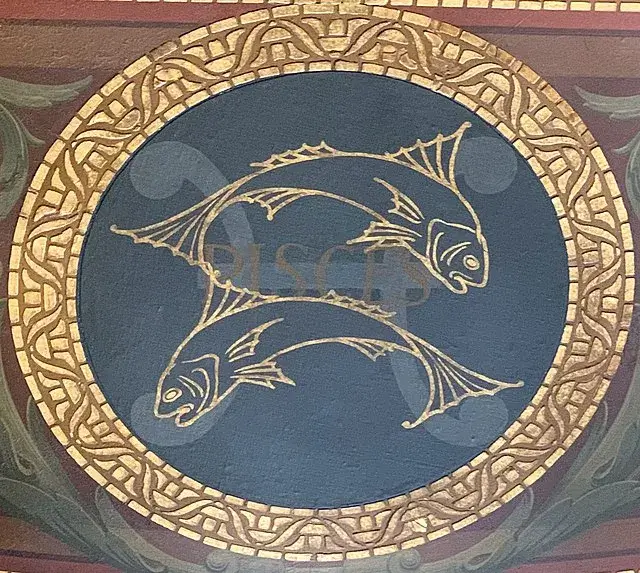
💡 What is the birthstone of March? FAQs
✔ Why does March have 2 birthstones?
In March there are two birthstones, Aquamarine and Bloodstone, chosen for their cultural significance. The tradition of having birthstones for each month has roots and varies among different cultures and customs. For March babies having two birthstones provides a range of options each with its unique symbolism and meaning.
✔ What is the color for March?
The color commonly linked with March is aqua or light blue which mirrors the shades of its birthstone Aquamarine. This color brings to mind skies and peaceful waters representing tranquility, clarity, and rejuvenation—qualities often associated with the onset of spring in March in parts of the world.
✔ What is the birthstone for March Pisces?
For those born in March under the Pisces zodiac sign, Aquamarine serves as their birthstone. Aquamarine is a symbol of bravery, lucidity, and calmness—attributes that resonate well with Pisces individuals known for their intuition, empathy, and creativity. It is believed that Aquamarine can enhance the traits of Pisces by providing equilibrium and inner resilience.
✔ What is March Lucky birthstone?
The auspicious birthstone for March may differ based on beliefs and personal choices. While traditionally Aquamarine holds the title of the birthstone for March, Bloodstone is also recognized as a gem for individuals born during this month.
Bloodstone is thought to bring luck, resilience, and security to the person wearing it, which explains why it’s a favored option for those in search of fortune and success. Ultimately, determining the birthstone for March depends on perspective and faith.
 SHIPPING
SHIPPING
